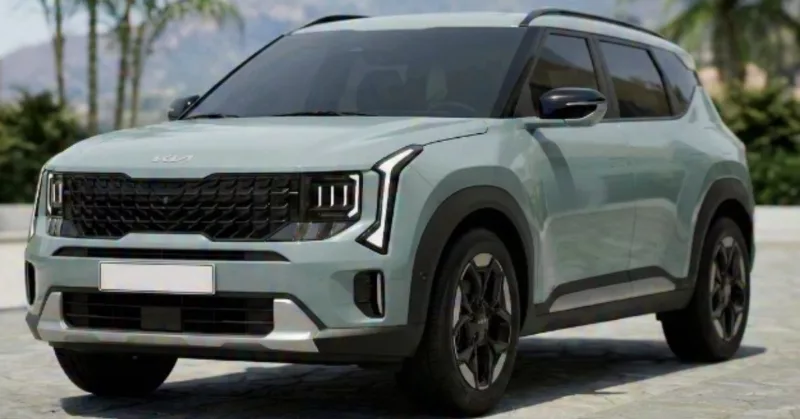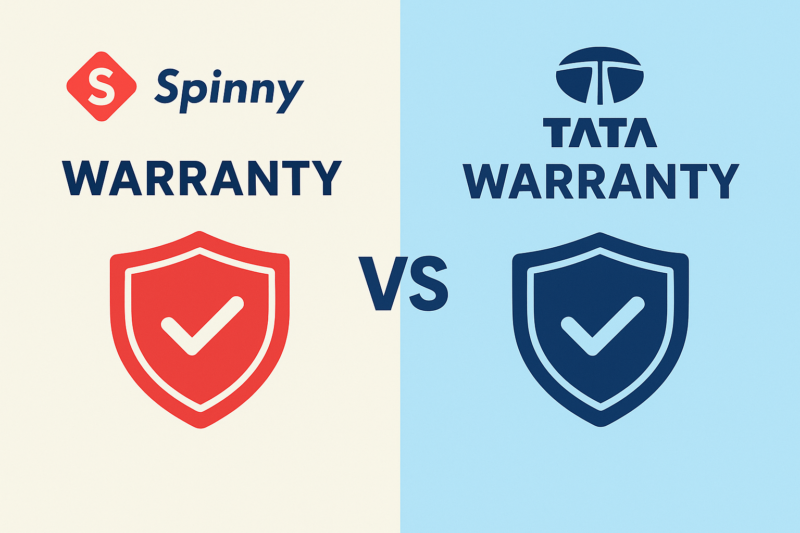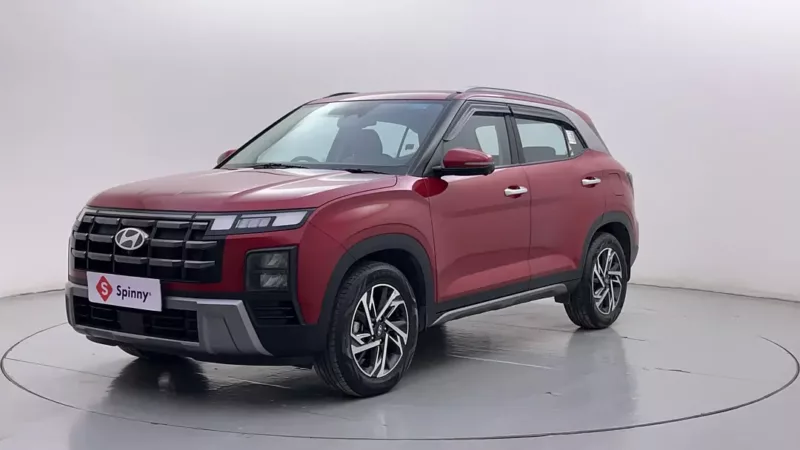Buying a used car in India has become simpler and hassle-free with technology making it easy to find and buy a car of your choice. However, that is just the first step in owning a car. After making the purchase, the most important step is to transfer the car or the vehicle registration certificate (RC) in the name of the new owner. This is a required step to ensure the legal liabilities of the car are transferred to the current owner of the car. While it may seem like a cumbersome process, understanding how to initiate and complete the RC transfer of your car will help you navigate this important step in your car ownership journey.
There are two kinds of vehicle registration transfer –
RC Transfer within the same state
Purchased by Someone Else –
If the Vehicle is purchased by someone else under normal circumstances
- Submit Form 29 with details of Transferor and Transferee

- Form 29 has to be submitted in the respective registering authority of the area of both the transferor and transferee
- Form 30 has to be submitted by the Transferee along with the other relevant documents within 45 days of the transfer of ownership of the vehicle along with the documents – Motor insurance policy, PUC certificate, Form 60 and PAN card of new buyer, Engine and Chassis print of the vehicle, Age proof of vehicle’s owner, Address proof of vehicle’s owner, Vehicle’s Registration Certificate proof, Undertaking provided by new buyer, Owner’s passport size photographs, Proof that taxes of the vehicle have been cleared within 14 days of the vehicle’s transfer, the Transferee must pay the applicable charges under the Central Vehicle Rules’ Rule.

- One needs to submit the documents such as a NOC from the concerned authority or a document stating the cause of refusal or provide documents to support the reason for not getting a NOC like a receipt from the registering authority and a receipt from the post office where the NOC was received from the concerning authority.
Car Purchased at Auction
RC Transfer for vehicle purchased at an auction funded by Central or State Government
- One must initiate an RC transfer through Form 32 to the respective registering authority within 30 days of the purchase.

- Applicable charges have to be paid as per Rule 81 of Central Motor Vehicles Rules.
- Documents to be submitted by the new owner are Form 32, Registration certificate, Insurance certificate (whether third-party or comprehensive), PUC certificate, Form 60 and PAN card proof, Engine and Chassis print of vehicle, Age proof and Address proof, Vehicle’s RC book, Purchaser’s Undertaking, Passport size photographs, a Certificate of proof of cleared vehicle’s taxes, Certificate of proofs that the vehicle was bought by the new owner at an auction under the Central or State Governments and that was sanctioned by the Central or State Government.
RC Transfer from one state to another
In case the vehicle needs to be transferred from one state to another one has to re-register the vehicle in the state or city the owner is moving to. The process has to be completed before the NOC is issued from the state or city where the vehicle was originally registered. To complete the inter-state RC transfer the following guidelines should be followed –
- In case of a car loan, get a NOC from the concerned bank by submitting documents like address proof of the new city, reason of transfer etc.
- Collect the NOC from the Regional Transport Office where the vehicle was registered by submitting Form 27 and Form 28, and the NOC copy from the bank.

- Documents to be submitted are the NOC application for transferring the vehicle from one state to the other, registration certificate, insurance policy documents, tax documents, Chassis print from the vehicle, copies of CMV Form 28 and PUC certificate.

- Re-registration of the vehicle in the new city or state within 6 months
- Find the nearest RTO office in the new city or state
- Submit an application along with documents such as original RC transfer copy, a copy of the vehicle insurance policy, copy of the NOC from the previous RTO office, submit Form 29 and Form 30 along with documents such as Certificate for undertaking emission tests, Passport size photographs, Local address proof and the applicable RTO charges for transfer of the vehicle.
- After processing of the application by the RTO, a fresh registration certificate is issued in the new city or state.
When to transfer vehicle ownership?
Remember, a RC transfer can be done only under the following circumstance –
- Transfer of ownership or RC transfer if the vehicle is bought by a new buyer
- Transfer in case of death of the registered owner in the name of the legal heir (In this case the legal heir has to inform the RTO about his/her intention about the vehicle within the 30 days of the owner’s demise and will be able to use the vehicle only for 3 months without getting it registered in his or her name).
- Transfer of the vehicle in an auction that has been sanctioned by the Central Government or the State Government.
What are the documents required to transfer car ownership?
A) Documents required in case of RC transfer of ownership in case of a normal sale are Form 29 and Form 30
- For Form 29
- Certificate of Registration
- Certificate of Insurance
- Certificate of Pollution Under Control
- PAN card of seller and buyer or submit Form 60
- Pencil print of Chassis & Engine
- Proof of Date of Birth of the buyer
- Proof of address of the buyer
- R.C. Book
- Purchaser’s undertaking
- Passport size photograph
- Tax clearance certificate
- For Form 30
- NOC certificate granted by the registering authority
- An order of the registering authority in case of refusal to grant a NOC
- If the NOC is not received, a declaration stating that the NOC has not been received by the Transferor has to be submitted with the receipt obtained from the registering authority;
- or a postal acknowledgement received from the registering authority where the application for NOC was sent by post.
B) Transfer of ownership on death of the owner of the vehicle Form 31
- Documents required are
- Certificate of registration
- Certificate of Insurance
- Death certificate of the registered owner
- Certificate of Pollution Under Control
- PAN card of the new vehicle user or submit or Form 60
- Pencil Print of Chassis & Engine
- Proof of Date of Birth of successor
- Proof of address
- Signature Identification of the Seller
- Declaration by the Applicant and all other Legal Heirs of the deceased owner
- Verification of vehicle on Form 20
- R.C. Book
- Passport size photograph
- Proof of Succession
C) Transfer of ownership of vehicle purchased in Public Auction by the Central or the State Government
- Form 32
- Certificate of Registration
- Certificate of Insurance
- Certificate or document confirming the sale of the vehicle in favour duly signed by the person assigned to conduct the auction
- Certified copy of the order of the Central Government or State Government permitting the auction of the vehicle
- Certificate of Pollution Under Control
- PAN card of the seller and the buyer or submit Form 60
- Pencil Print of Chassis & Engine
- Proof of Date of Birth of the Purchaser
- Proof of Address
- Purchaser’s Undertaking
- R.C. Book
- Passport size photographs
Visit the Parivahan Sewa Website to check the procedure of vehicle transfer offline and online. Remember the most important factor of vehicle registration from one state to the other is submitting the correct forms and documents.
What is the cost to transfer vehicle ownership?
The cost to transfer vehicle ownership will vary from state to state and how old the vehicle is. Check the Parivahan website for details regarding the fees structure or the individual State Transport website.
Step-by-step procedure to transfer vehicle ownership
Notarise the Agreement of Sale
Firstly, notarise the ‘Agreement of Sale’ where the details regarding the amount to be paid during the sale of the vehicle, Mode of Payment, Registration Certificate, Insurance and state of the vehicle to be purchased are stated and that helps to forward the position of ownership transfer.
Visit the RTO with required documents
Post payment of the vehicle by the new owner, both the transferor and the transferee have to visit the local RTO and submit Form 29 and Form 30 along with the relevant documents as mentioned above. Form 35 should be submitted in case of hypothecation.
Hand over the Necessary Documents
Submit the necessary forms along with the required and above-mentioned documents – registration certificate, insurance certificate, PUC certificate, etc. by the buyer. Do not hand over the vehicle invoice to the new buyer.
Application for Clearance Certificate
Application for a clearance certificate has to be made by the buyer from the RTO. The new owner should submit a letter for the clearance certificate with a self-addressed envelope affixed with relevant stamp duty and the documents received from the seller.
Rules might differ from state to state and the new owner might have to submit added documents as well. All the documents should be submitted to the RTO Head at his office and the RTO will issue a receipt for the same. The clearance certificate will be issued by post or mail to the buyer when application verification is successful.
Application for transfer of ownership at the new RTO
The new owner of the vehicle has to pay the ownership transfer fee as applicable for the concerned state or city. The new buyer should submit the two payment receipts along with the necessary documents such as
- Form 29 (two copies)
- Form 30
- PAN card proof
- Registration certificate original
- Clearance certificate original
- Insurance certificate
- Address proof of the new owner
- PUC certificate
- Self-addressed envelope affixed with the relevant stamp duty
- Passport-sized photographs of the new owner
An acknowledgement paper will be given to the buyer in exchange and the new registration certificate is sent by the postal service. If additional information warrants then the new owner might have to submit Form 32 and Form 35.
Step-by-step online procedure to transfer vehicle ownership

- Go to the Parivahan Sewa Website
- Click on ‘Online Services’
- Select ‘Vehicle Related Services’
- Select the ‘State’ and wait for the web page to reload.
- Click on ‘Vehicle Registration Number’
- Enter the ‘Vehicle Registration Number’, ‘Select the State’ and ‘Select the RTO’
- Click on ‘Proceed’
- Click on the option ‘Online Services’
- Select the option ‘Transfer of Ownership’
- Enter the ‘Chassis Number’ and ‘Mobile number’
- Click on ‘Generate OTP’
- Enter the OTP sent to your registered mobile number
- Click on ‘Show Details’
- Select ‘Transfer of Ownership’ under Application Selection
- Share the details of the new owner’s Current address, Permanent address and Insurance.
- Select the mode of payment and make the payment
- Lastly, the two payment receipts and Form 29 and Form 30 will be generated after payment is completed online.
- The transferor and the transferee must sign the hard copies of the documents. Then the new buyer must submit the same with the necessary documents as mentioned above to the new RTO.
The online procedure might differ from state to state or city to city. Once the verification is successful from the RTO office, a new RC certificate will be sent to the new owner. If there are any disparities, the RTO will notify the new buyer and the seller to appear before the office for validation.
What is the result of not transferring car ownership?
When a used vehicle is bought by the buyer from the owner, the registration certificate of the vehicle should be transferred to the name of that new owner. Relevant documents must contain the name of the new owner so that in case of any penalties associated with the vehicle can be transferred from the previous owner to the new owner of that vehicle to avoid any unforeseen problems.
Additional documents required to transfer car ownership
The new owner of the vehicle has to pay the ownership transfer fee as applicable for the concerned state or city. The new buyer should submit the two payment receipts along with the necessary documents such as –
- Form 29 (two copies)
- Form 30
- PAN card proof
- Registration certificate original
- Clearance certificate original
- Insurance certificate
- Address proof of the new owner
- PUC certificate
- Self-addressed envelope affixed with the relevant stamp duty
- Passport-sized photographs of the new owner
An acknowledgement paper will be given to the buyer in exchange and the new registration certificate is sent by the postal service. If additional information warrants then the new owner might have to submit Form 32 and Form 35.
Important Updates in 2025 to Keep in Mind
While the overall RC transfer process remains the same, a few important updates in 2025 make it essential to stay informed:
RC Transfer Rules: 2024 vs 2025
| Aspect | 2024 | 2025 (Updated) |
| Timelines for Transfer | Often stated as 30–45 days in general | 14 days (intra-state) & 45 days (inter-state) as commonly applied under CMVR/Rule 55 and state RTO practice |
| Processing Time by RTO | No fixed commitment | Some states (Delhi, Haryana) guarantee completion within 7–30 days (times vary by RTO workload) |
| Fees | Only “varies by state” was mentioned | Approx. ₹300–₹600 transfer fee + ₹200 smart card + ₹50–₹100 postal/service fee. Check the state RTO for exact amounts |
| Loan / Hypothecation | Hypothecation removal noted, but with less emphasis | Bank NOC is mandatory before RC transfer if the car is under loan |
| NOC & Toll Dues | Standard NOC process | MoRTH proposal: NOC won’t be issued if toll dues remain unpaid |
| State-specific Rules | Mostly uniform, with exceptions for inter-state | West Bengal allows RC transfer at any registering authority; more states are simplifying rules |
| Online Services | Partial (form fill + fee payment, rest offline) | Parivahan Sewa supports document upload, e-sign, fee payments, and real-time tracking. Features vary by state |
- Timelines clarified: RC transfer must typically be completed within 14 days for intra-state and 45 days for inter-state transfers, as per CMVR/Rule 55 and state RTO practice.
- State service guarantees: Some states, such as Haryana and Delhi, promise issuance within 7–30 days, depending on the RTO workload.
- Fee structure: Most RTOs charge approximately. ₹300–₹600 for RC transfer, ₹200 for smart card, ₹50–₹100 postal/service fees. Exact amounts vary by state and vehicle type. Check your state’s transport website for exact amounts.
- Loaned vehicles: If the car is under hypothecation, an NOC from the finance company is mandatory before RC transfer can be processed.
- Toll dues clearance: The Ministry of Road Transport & Highways (MoRTH) has proposed that NOCs will not be issued unless pending toll dues are cleared, making compliance more stringent.
- Simplified rules in some states: For example, West Bengal now allows RC transfers at any registering authority across the state, not just at the original RTO.
- Enhanced online services: The Parivahan Sewa portal now supports document uploads, e-signatures, fee payments, and real-time application tracking, reducing the need for repeated visits to the RTO.
FAQs about transfer of car ownership
When should I apply for transfer of vehicle ownership?
How much time does RC transfer take in India?
In India, the time to complete RC transfer depends on the RTO Office and the intricacies of the transfer of the concerned vehicle.
Is a transfer of ownership necessary in case a vehicle is being provided as rental?
No, vehicle ownership is not required when the vehicle has been given for rental, but insurance certificate, pollution under control certificate etc. must be there.
What are car ownership transfer charges?
The car ownership or RC transfer fees will vary from one RTO to the other.
Q. What is the new timeline for RC transfer in 2025?
In 2025, the Ministry of Road Transport clarified that RC transfer must be completed within 14 days for ownership changes within the same state and 45 days for inter-state transfers. This ensures the car registration transfer is done promptly and legally.
Q. Do I need to clear toll dues before applying for car registration transfer?
Yes. A new rule proposed in 2025 states that an NOC will not be issued if there are pending toll dues. This means you must clear all dues before proceeding with your RC transfer.
Q. How long does it take for the RC transfer to be processed now?
Processing times vary by state, but many RTOs (such as Delhi and Haryana) now guarantee car registration transfer within 7–30 days of successful document submission.
Q. Has the fee structure for RC transfer changed in 2025?
Yes. While fees still vary by state, the common breakdown is now clear: ₹300–₹600 for the RC transfer, about ₹200 for the smart card, and ₹50–₹100 as postal or service charges. Check the state RTO for exact amounts.
Q. Can I complete the entire car registration transfer online in 2025?
In many states, yes. The Parivahan Sewa portal now enables document uploads, e-signing, fee payment, and real-time tracking, making the RC transfer process more convenient without requiring multiple visits to the RTO.



